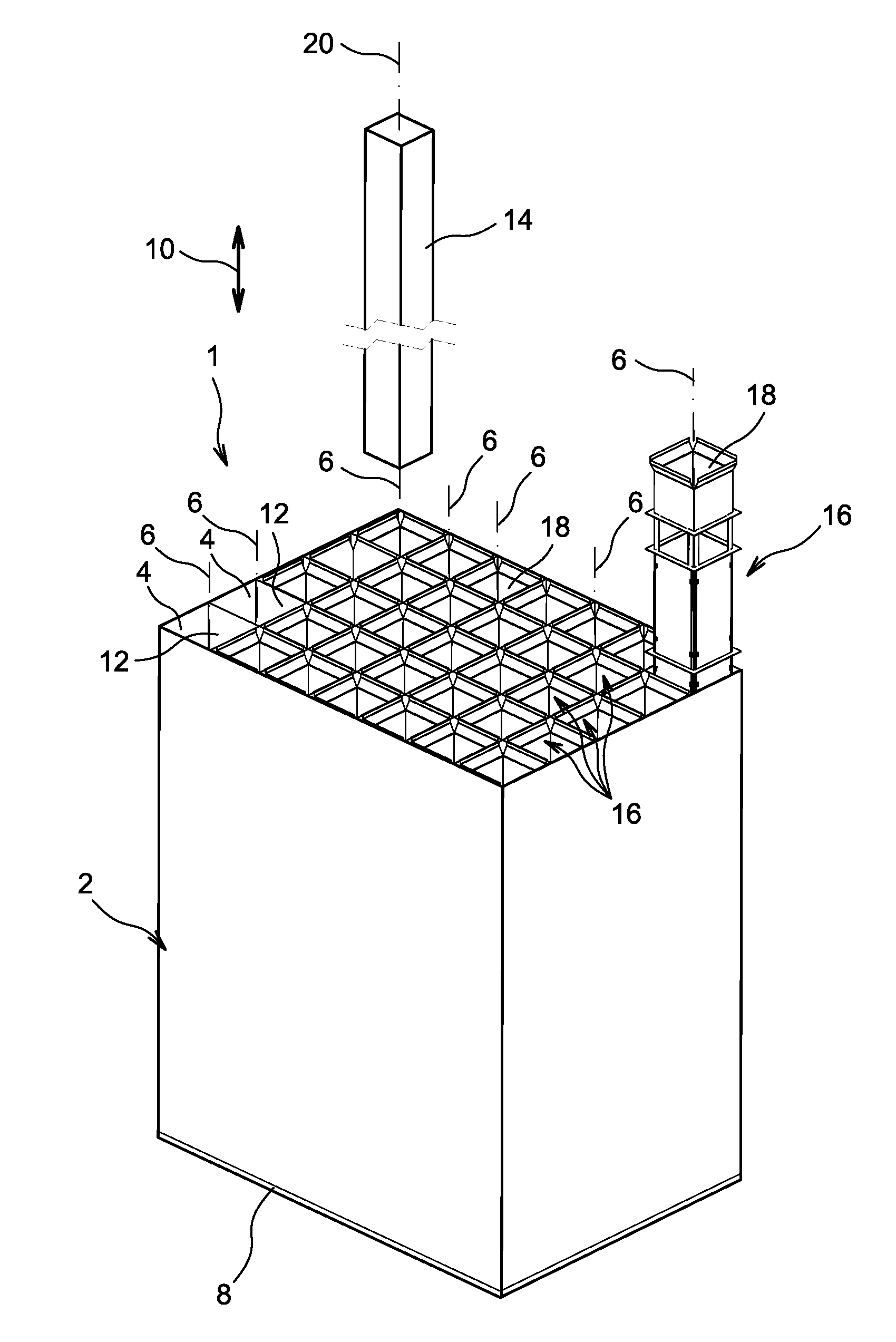Storage rack for fresh or spent nuclear fuel assemblies
a technology for storage racks and nuclear fuel, which is applied in the direction of nuclear elements, nuclear engineering problems, greenhouse gas reduction, etc., can solve the problems of significant risk of rifling damage of neutron-absorbing plates, additional manufacturing and checking operations, and relatively simple sleeves design. , to prevent any risk of criticality, good centering of sleeves
- Summary
- Abstract
- Description
- Claims
- Application Information
AI Technical Summary
Benefits of technology
Problems solved by technology
Method used
Image
Examples
Embodiment Construction
[0040]First in reference to FIG. 1, a storage rack 1 for fresh nuclear fuel assemblies or nuclear fuel assemblies previously spent in a nuclear reactor is shown, the rack being intended to be submerged in a pool.
[0041]This figure shows that the rack 1 first has a rigid structure or “skeleton”2, defining a plurality of cavities or “cells”4 parallel to each other, and axes 6 oriented vertically when the rack 1 is submerged in the pool, with the bottom 8 of the structure 2 resting on the bottom of the pool. In this position shown in the figure, the axes 6, parallel to the longitudinal direction 10 of the rack, are therefore arranged vertically.
[0042]The cells 4, usually provided in large number, such as several dozen, can be obtained in any way known by those skilled in the art, such as that aiming to provide main sheets parallel to each other, separated by crosspiece sheets arranged orthogonally relative thereto. This leads to substantially cylindrical cells 4, each delimited by a sid...
PUM
 Login to View More
Login to View More Abstract
Description
Claims
Application Information
 Login to View More
Login to View More - R&D Engineer
- R&D Manager
- IP Professional
- Industry Leading Data Capabilities
- Powerful AI technology
- Patent DNA Extraction
Browse by: Latest US Patents, China's latest patents, Technical Efficacy Thesaurus, Application Domain, Technology Topic, Popular Technical Reports.
© 2024 PatSnap. All rights reserved.Legal|Privacy policy|Modern Slavery Act Transparency Statement|Sitemap|About US| Contact US: help@patsnap.com










